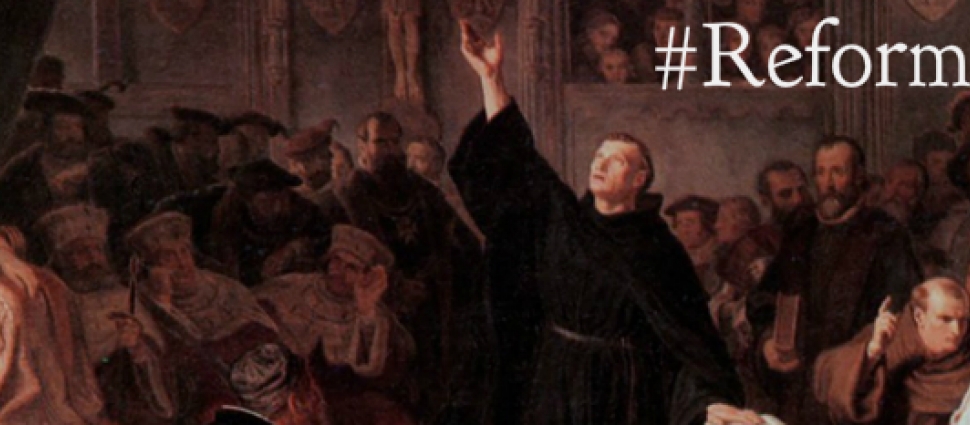William Tyndale and Medieval Exegesis

Oct 13, 2017
William Tyndale (c.1494–1536), the English Reformer and proto-Puritan, clearly showed a burden for providing the Scriptures in the common language of the people. Likewise, regarding biblical exegesis, he imparted correctives for the abuses of medieval interpretation. We must appreciate the connection between the provision of the Word of God in English and the more direct approach to interpretation advocated by Tyndale. The clarity of God’s message to the church was directly proportional to the intelligibility of translation and interpretation. The translator should strive for simplicity without becoming simplistic.
In The Obedience of a Christian Man (1528), Tyndale primarily emphasizes the interpretation of Scripture as “the opening up of the words and statements of Scripture in order to bring out its single, full and natural sense.” He thus wrote against the medieval division of biblical texts into “foure senses, the literall, tropological, allegoricall, and anagogical,” which must “be rejected and destroyed.” He clearly manifested the Reformation dismissal of this exegesis as evidenced by his contemporaries Luther and Calvin.
Medieval exegete Nicholas of Lyra (c.1270-1349) sums this approach up basically and supportively in verse: Littera gesta docet, quid credas allegoria, quid agas tropologia, quo tendas anagogia – “the letter teaches events, allegory what you should believe, tropology what you should do, anagogy where you should aim.” Much earlier, John Cassian (c.360-435), in his Conferences and in connection with the principles of Origen, manifests a pioneering development of the fourfold method by appealing to “historical interpretation and the spiritual sense.” The spiritual sense of the text concerned the allegorical, tropological, and anagogical aspects of it. The historical concerns the knowledge of “things past and visible” as we understand the text literally at the time of writing. The allegorical moves beyond “what actually happened” as it prefigures “the form of some mystery.” The tropological involves “the moral explanation which has to do with improvement of life and practical teaching.” The anagogical refers to “to still more sublime and sacred secrets of heaven” or matters “future and invisible.”
We can understand this method concretely by Cassian’s treatment of Galatians 4:26, “Jerusalem which is above is free, which is the mother of us all.” He says the city is historically or literally “the city of the Jews” as it existed and was inhabited visibly. Allegorically, the city symbolizes or prefigures “the Church of Christ.” Tropologically or ethically the city concerns practically “the soul of man, which is frequently subject to praise or blame from the Lord.” Anagogically or eschatologically, Jerusalem denotes the future and “heavenly city of God.”
In dealing with the medieval approach, Tyndale affirmed the legitimacy of allegorical (symbolic) interpretation, which treats that which is “appropriate to faith” and emerges rightly out of the literal sense. The tropological “pertaineth to good manners (say they) and teacheth what we ought to do” and “the anagogicall to hope and thinges above.” Both of these are unnecessary, because we can reach them by seeing texts as allegories of manners and hope. In this way, each passage has “but one sense,” which is the literal. In other words, the passage contains one meaning not several. As far as Tyndale was concerned, digging for multiple senses easily leads to unbridled subjectivity. He therefore supported the use of allegorical interpretation but with caution. Though allegories can “beguil” us, “there is not a better, vehementer, or mightier thing” to communicate truth “than an allegory.”
While the differences between medieval and Reformation exegesis exist, we must qualify the discontinuity and avoid too radical of a dichotomy. For example, theologians such as Aquinas were careful to insist that the three spiritual senses must be based on the literal, which is God’s intended meaning. In this way, the text communicates literally one thing on the surface and another beneath it as determined by the Spirit, the divine author. In this manner, there may be more continuity between medieval “sense” and Reformation/Post-Reformation “application” than meets the eye. Furthermore, Aquinas argued that the spiritual sense of a text must be governed by the straightforward literal sense set forth elsewhere in Scripture. Thus, the four senses need not be communicated everywhere.
In the end, the big issue at hand for Tyndale, as he helped to set the stage for Puritan exegesis, concerned the meaning of the text. He wanted to safeguard the Scripture as God’s authoritative Word sufficient for all of faith and life and clearly understood by the typical Christian man. In so doing, Tyndale was insistent that a passage has one intended and essential meaning given by God not two, three, or four. So, the allegorical understanding of a text sets forth that one meaning in terms of the fuller divine sense, hopefully without unwarranted allegorization. Even with the qualifications considered above, the fourfold medieval approach tends to take the Scripture away from the individual Christian by obscuring its clarity. Consequently, the church and not the Bible becomes the sufficient and authoritative rule for the Christian life, since the individual must rely too heavily on the former for elucudating the truth.





